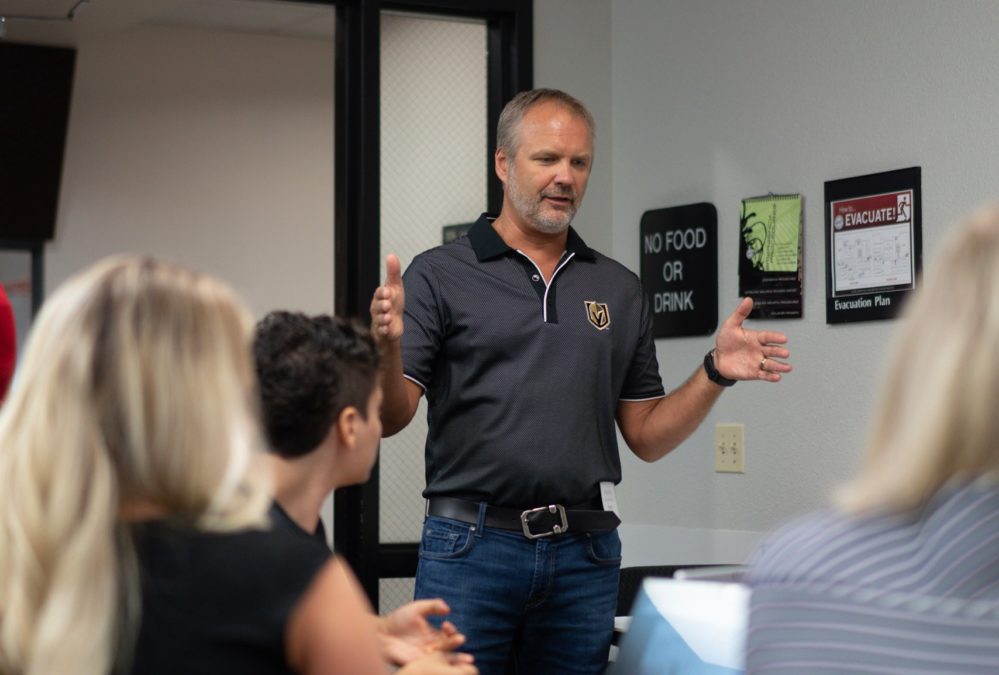McKesson, the global healthcare provider currently ranked 6th on the Fortune 500, turned over $208.4 billion in 2018 and has over 20,000 employees.
So, what is the role of the CTO at such a large corporation?
Information Age spoke to Andrew Zitney to find out.
The role of the CTO at McKesson
In general, Zitney performs the “regular functions” of a CTO. This surrounds McKesson’s architecture strategy and its technology, but “I also run the data centres, cloud strategy, platform strategy, transformation office, in and around the technology transformation, which is driven from the application side,” Zitney said.
His team and he also “kicked off” a DevOps strategy within the organisation, for the purpose of “creating a developer platform that can deliver for the businesses,” he continued. “We have developers and product developers, but we wanted to build a common platform that can be shared across.”
What’s the role of the CTO in digital transformation?
His role as CTO is changing
From a CTO perspective, the role has been evolving over the last five years.
Today, “my role is about driving the technology transformation that enables the business transformation,” said Zitney. And it’s a position that’s grown in importance.
The largest companies have a lot of legacy infrastructure and all the challenges that come with that. These organisations are just now admitting that they have to become technology companies and overcome these legacy hurdles.
Tech Leaders Summit
The UK’s largest summit for tech leadership. Register for your place today!
“No matter what business you’re in, companies are starting to realise they need to maintain a presence in the technology space — that’ll be the differentiator,” explained Zitney.
This is why the role of the CTO has become so important — business, increasingly, is going to be delivered through software, no matter what industry. The CTO’s job to help through that transformation and put an environment in place that embraces the software-first world.
The role of the CTO is evolving parallel to technology’s role in business transformation
Organisations also need to have a multi-cloud environment or strategy, which becomes the building block for “full-stack technology that then enables us to deliver for the business whatever the need is, whether that’s going to be 100% cloud or 100% on premise, it doesn’t matter,” he continued.
This necessary change in how businesses embrace operations and strategy reflects the changing role of the CTO. These individuals now have to lead a “transformation office” that is really focused on getting closer to the business.
The CTOs job is about freeing up developers to write business product language and stay out of everything that doesn’t add value to that business or that consumer.
“I just deliver that through the capability and give them a platform to write that code on,” Zitney said.
Getting value out of technology — the CTO role
Freeing up IT… and the developer teams
As a CTO, how does Zitney go about freeing up McKesson’s IT team and the developers in the company so that they can focus on innovation?
“It’s everything from restructuring management to reorganising, changing the operating model, up-skilling, picking partners to take some of the commodity services and deliver them to you as a service, so that you’re not wasting your energy on things like running data centres when you’re not at the scale that you should be running your own data centre,” he answered.
“Offload that and then plough it back into the business on what I call above the line, plough that back into the business developers delivering business product. It sounds easy, you can put it down on a single piece of paper; but that’s a three to five year journey, transforming your company into that kind of operating model.”
Microsoft UK CTO provides his standout technology predictions
A CTO’s tech prediction(s)
As a CTO, Zitney comes across a huge range of technologies and has a number of predictions in this space.
“It’s easy,” he said, to point to artificial intelligence and machine learning. And, everyone is talking about data analytics — “everything is built on data, no matter where you go,” he clarified.
“The people that figure out how to leverage this data, both for internal efficiencies and making the consumer experience much more pleasant, especially in the healthcare space, they’re going to be the winners.”
In the healthcare industry, anything that a business can do to make life easier for someone is an obvious priority — leveraging data will help focus on the patient first.
How do you take advantage of this data? “From a technology perspective, it’s going to be through AI and machine learning and higher level, deeper learning through analytics,” concluded Zitney. “It’s not just your common every-day analytics from an algorithm perspective, but deep learning on you as an individual that will enhance what can we do to keep you healthier and make your life more pleasant.”
Related: The CTO role of today will evolve into the CEO role of tomorrow










